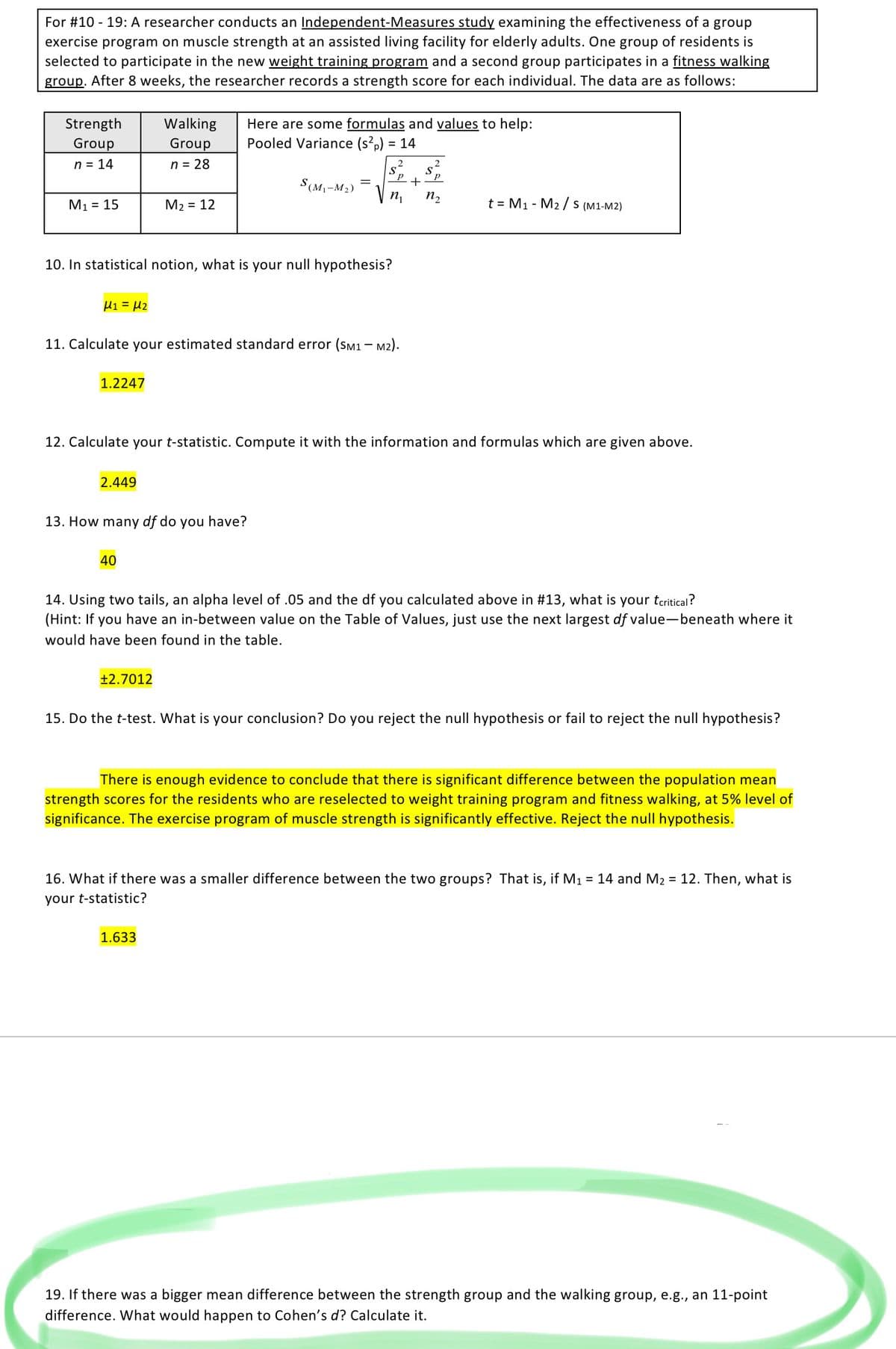19. If there was a bigger mean difference between the strength group and the walking group, e.g., an 11-point difference. What would happen to Cohen's d? Calculate it.
19. If there was a bigger mean difference between the strength group and the walking group, e.g., an 11-point difference. What would happen to Cohen's d? Calculate it.
Glencoe Algebra 1, Student Edition, 9780079039897, 0079039898, 2018
18th Edition
ISBN:9780079039897
Author:Carter
Publisher:Carter
Chapter4: Equations Of Linear Functions
Section4.5: Correlation And Causation
Problem 23PFA
Related questions
Question
Just question 19 please

Transcribed Image Text:For #10 - 19: A researcher conducts an Independent-Measures study examining the effectiveness of a group
exercise program on muscle strength at an assisted living facility for elderly adults. One group of residents is
selected to participate in the new weight training program and a second group participates in a fitness walking
group. After 8 weeks, the researcher records a strength score for each individual. The data are as follows:
Strength
Walking
Here are some formulas and values to help:
Pooled Variance (s?,) = 14
Group
Group
n = 14
n = 28
S(M1-M2)
V n
n,
M1 = 15
M2 = 12
t = M1 - M2 / S (M1-M2)
10. In statistical notion, what is your null hypothesis?
µ1 = µ2
11. Calculate your estimated standard error (SM1- M2).
1.2247
12. Calculate your t-statistic. Compute it with the information and formulas which are given above.
2.449
13. How many df do you have?
40
14. Using two tails, an alpha level of .05 and the df you calculated above in #13, what is your tcritical?
(Hint: If you have an in-between value on the Table of Values, just use the next largest df value-beneath where it
would have been found in the table.
+2.7012
15. Do the t-test. What is your conclusion? Do you reject the null hypothesis or fail to reject the null hypothesis?
There is enough evidence to conclude that there is significant difference between the population mean
strength scores for the residents who are reselected to weight training program and fitness walking, at 5% level of
significance. The exercise program of muscle strength is significantly effective. Reject the null hypothesis.
16. What if there was a smaller difference between the two groups? That is, if M1 = 14 and M2 = 12. Then, what is
your t-statistic?
1.633
19. If there was a bigger mean difference between the strength group and the walking group, e.g., an 11-point
difference. What would happen to Cohen's d? Calculate it.
Expert Solution
This question has been solved!
Explore an expertly crafted, step-by-step solution for a thorough understanding of key concepts.
Step by step
Solved in 2 steps

Recommended textbooks for you

Glencoe Algebra 1, Student Edition, 9780079039897…
Algebra
ISBN:
9780079039897
Author:
Carter
Publisher:
McGraw Hill

Glencoe Algebra 1, Student Edition, 9780079039897…
Algebra
ISBN:
9780079039897
Author:
Carter
Publisher:
McGraw Hill